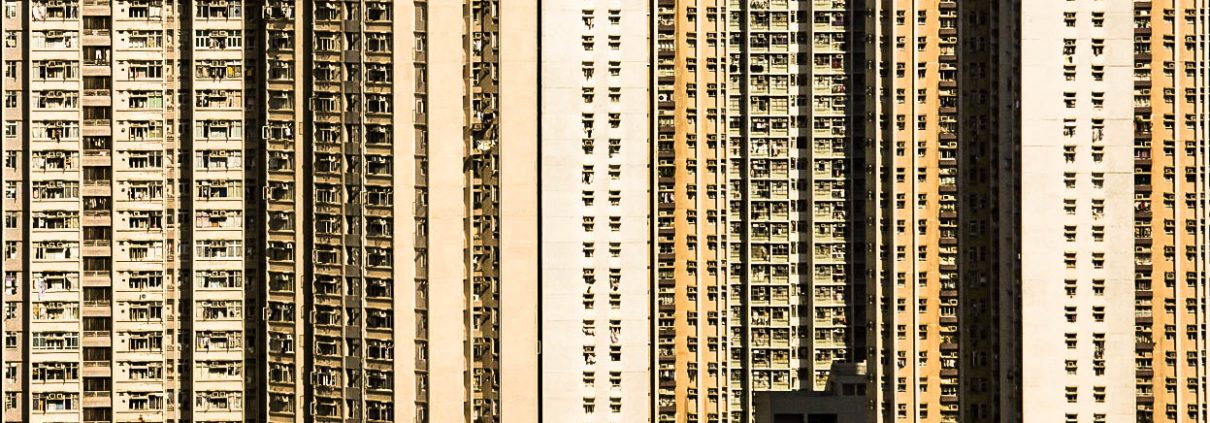THE RISE OF THE HIGH-RISE IN CHINA
By Mohan Khidia MURP ’16
The first thing I noticed about China was the ubiquitous forest of cloned high-rise residential buildings. Apparently, I am living in one of them – on the 14th floor of a 27 story building. Approximately half of the China’s population lives in the “great housing wall of China” – high-rise residential blocks. In the recent years, housing development has ballooned in China parallel to its economy. The unprecedented economic growth since the ’80s has modernized the overall society and resulted in turning China into “the world’s biggest factory.” The rapid growth has drawn more and more people to cities. Currently, more than 742 million live in urban areas, approximately 54.7 percent of the total population – urbanization has been ranked as the paramount priority by the government. In order to accommodate the great influx of population, high-rise buildings, seen as a viable solution, have sprouted almost everywhere in China. However, the endless sea of high-rise apartments is creating a ‘sterile’ and ‘one-dimensional’ urban landscape. More importantly, a large number of the high-rise residential blocks are unoccupied, indicating a crack in the Chinese development model.
High-rise construction in China is a recent phenomenon – the construction spurred dramatically in the 1990s. Large scale housing projects can be witnessed in village, town, or megacity of almost every province. Construction cranes are so common that it is jokingly referred as “the national bird of China”. The mass housing reminds me of the notorious Chicago’s public housing projects, but is more complex. China’s confidence and ambition to be a global economic leader has exaggerated the scale of construction. Foreign influences in the buildings’ design is inevitable. Most of the buildings are constructed in a ridiculously short period of time that the longevity of these buildings can be questioned. Moreover, critics argue that the mass housing programs are benefitting only the rich-urban population because many rural-poor cannot afford the housing. The situation is further worsened by the complicated household registration system – the Hukou system. The Hukou is a residency permit that connects a person to his or her hometown. Without an urban Hukou, migrants are denied of many welfare provisions. Since the land of many migrants have been acquired by government, they are forced to settle down in informal housings.
The government is haphazardly constructing cities – at a rate of ten new cities per year – with the primary objective to increase the Gross Domestic Product (GDP). According to a leading newspaper, the government is deciding to move 250 million rural residents to the new urban China within the next decade. The ultimate motivation is to divert the growth from export dependency to domestic demand. The government precepts that urbanization coupled with large-scale real estate development is the ideal way to increase the domestic consumers. However, many studies have proved that property development in China is largely oversupplied and overvalued, the imbalance, in fact, led to the formation of “the property bubble” in China. The scale of the problem can be measured by the 2011 property estimates – nearly 65 million apartments in the nation were unoccupied. Shockingly, the number of vacant housing properties in Beijing alone is more than the entire United States. In late 2011, government’s attempts to make the property affordable resulted in an unusual fall of the property values – marked the deflation of the property bubble. Although the fall in housing prices due to oversupply seems a normal market response, however, the situation was highly threatening because property development accounts for almost a quarter of China’s GDP. In fact, many experts attributed the deflation of the housing bubble as the major cause of China’s economic decline in 2012.
China is a newcomer in the process of urbanization, but the rapid construction speed has given birth to a great optimism. However, the residential model is not yet stabilized, the barrage of residential tower blocks has exposed the vulnerable socio-economic structure of the nation. Although the government is taking measures to pacify the situation, the intention to build maximum in minimum time might jeopardize the future of the nation. Now the question arises: Is China trying to find its own definition of modernization or is it mimicking the Western formula?










